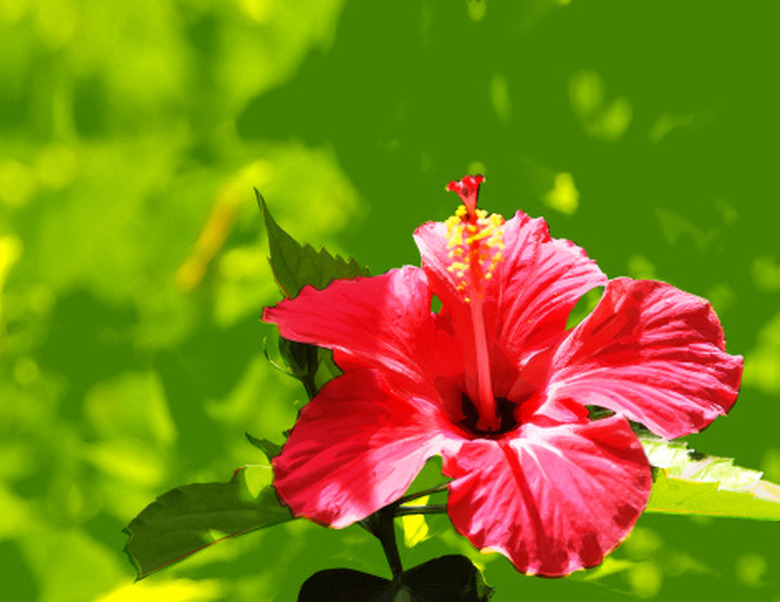Characteristics Of A Hibiscus
The hibiscus, a perennial shrub, produces beautiful blooms when properly maintained. It tolerates various climates and requires prepared soil that is rich in nutrients. Hibiscuses grow well when planted with other shrubs, but thrive when planted alone where they receive the entire supply of sunlight, water and food.
Physical Characteristics
Physical Characteristics
Hibiscuses are perennial plants that reach heights up to 8 ft. The hibiscus leaf grows between 2 and 3 inches long and is often three-lobed with a diamond or ovate shape, depending on the species. The hibiscus produces flowers that range in colors from red, pink and white in the late summer and early fall. The flowers grow as large as a paper plate, reaching 6 inches in diameter.
Habitat
Habitat
The hibiscus grows best in locations that offer full sunlight to some shade with ample moisture. However, it adapts to dryer climates and is generally drought tolerant. The USDA hardiness zones for the hibiscus, indicated by the North Carolina State University website, are 5 through 9. It requires a cover or shelter in locations that are susceptible to frost.
Soil and Planting
Soil and Planting
For proper growth, the hibiscus favors sandy soil with ample drainage and a pH level between 6 and 7. Adding compost or organic material, such a manure, to the soil provides nutrients required by the hibiscus. The hole for planting the hibiscus should be only slightly larger than the original container. Press the soil firmly around the roots of the plant to help it develop a strong root base. Saturate the ground and the base of the hibiscus with water after planting. Place 3 or 4 inches of mulch around the hibiscus to preserve moisture and control weeds.
Maintenance
Maintenance
Prune the hibiscus around September, just before new growth occurs. Remove one-third of the plant with a sharp hand shears. For an older bush, trim it completely back to stimulate new growth. The new growth will result in new blooms. Water the hibiscus every two or three days during warm weather and add mulch when necessary.
Fertilize the hibiscus about three weeks after pruning or when new growth appears. Use a low-phosphate, water soluble fertilizer, such as a 7-2-7 that contains trace minerals, like iron and copper. This prevents phosphate build up that harms the plant. Cover the plant's leaves and ground with the fertilizer every three to four weeks during the growing season.
